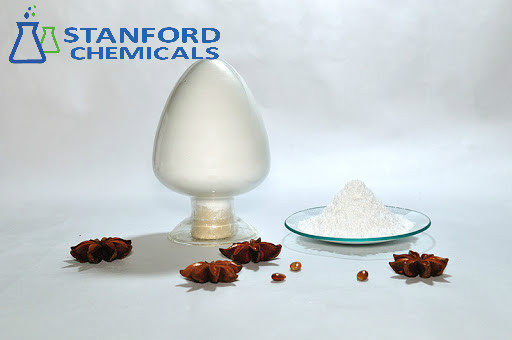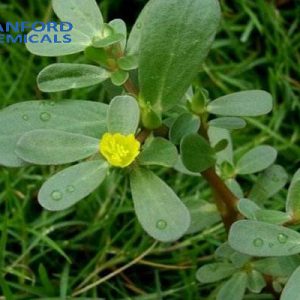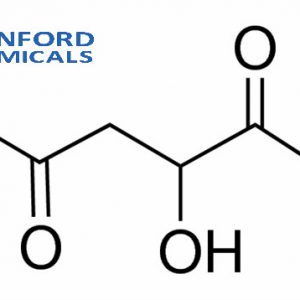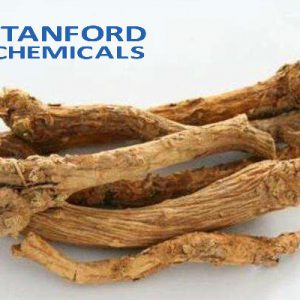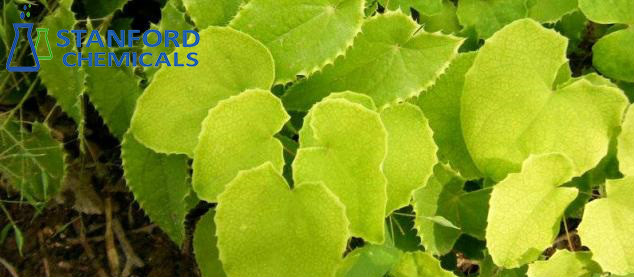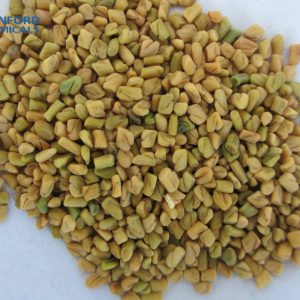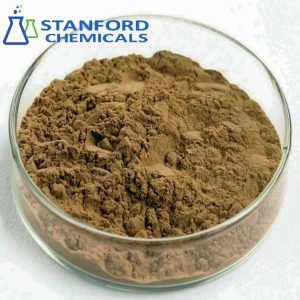- Home
- Herbal Extract
- 050-000-283 Shikimic Acid, CAS 138-59-0
050-000-283 Shikimic Acid, CAS 138-59-0
| Synonym | (3R,4S,5R)-(−)-3,4,5-Trihydroxy-1-cyclohexenecarboxylic acid |
| Type | Herb extract |
| Source | Illicium verum Hook.f. |
| Key words | aromatic biosynthetic pathway, anti-inflammation |
| Related products | Glabridin, Pyrroloquinoline Quinone, Celastrol |
- Description
Description
Description of Shikimic Acid
Shikimic acid is a cyclohexene carboxylic acid originally isolated from I. religious. It decreases lipid droplet accumulation in HepG2 cells and 3T3-L1 adipocytes when used at a concentration of 80 µM, as well as increases the levels of phosphorylated AMPK and decreases the levels of MID1IP1 in HepG2 and 3T3-L1 adipocytes when used at 40 µM.
Shikimic acid, obtained from star anise present in its anionic form shikimate, is a cyclohexane carboxylic acid, a cyclohexene, and a cyclitol. The shikimic acid pathway is essentially used to synthesize basic amino acids by plants and lower organisms such as bacteria, fungi, and algae.
Specifications of Shikimic Acid
| Product Name | Shikimic Acid |
| CAS Registry Number | 138-59-0 |
| Molecular Formula | C7H10O5 |
| Molecular Weight | 174.15 g/mol |
| Purity | 95% |
| Appearance | White solid |
| Melting point | 185°C |
| Shelf life | 2 years |
| Functions | Induces remyelination, anti-inflammation, and relieves pain |
Applications of Shikimic Acid
– Biosynthetic Precursor of Amino Acids:
Shikimic acid, in its naturally occurring form, plays a pivotal role in several essential biological processes. It serves as a major biosynthetic precursor for key amino acids, including phenylalanine, tyrosine, and tryptophan. This involvement in the shikimic acid pathway is crucial for plants and lower organisms like bacteria, fungi, and algae. The ability to synthesize these amino acids makes shikimic acid a fundamental building block for the production of a wide array of plant alkaloids.
– Synthesis of Important Plant Compounds:
Shikimic acid is integral to the intricate biosynthetic pathways leading to the formation of essential plant compounds. One notable example is its involvement in the biosynthesis of lignin, a complex polymer crucial for plant structure and support. Additionally, shikimic acid plays a key role in the production of flavonoids, a diverse class of secondary metabolites known for their antioxidant and anti-inflammatory properties. Its multifaceted involvement showcases the broad impact of shikimic acid on the chemical composition and functional characteristics of plants.
Reference:
- Bohm, B.A. Shikimic Acid (3,4,5-Trihydroxy-1-cyclohexene-1-carboxylic Acid). Chem. Rev. 65(4), 435-466 (1965).
- Rawat, G., Tripathi, P., and Saxena, R.K. Expanding horizons of shikimic acid. Recent progresses in production and its endless frontiers in the application and market trends. Appl. Microbiol. Biotechnol. 97(10), 4277-4287 (2013).
- Kim, M.J., Sim, D.Y., Lee, H.M., et al. Hypolipogenic effect of shikimic acid via inhibition of MID1IP1 and phosphorylation of AMPK/ACC. Int. J. Mol. Sci. 20(3), E582 (2019).
- Lu, F., Yin, D., Pu, Y., et al. Shikimic acid promotes oligodendrocyte precursor cell differentiation and accelerates remyelination in mice. Neurosci. Bull. 35(3), 434-446 (2019 ).

